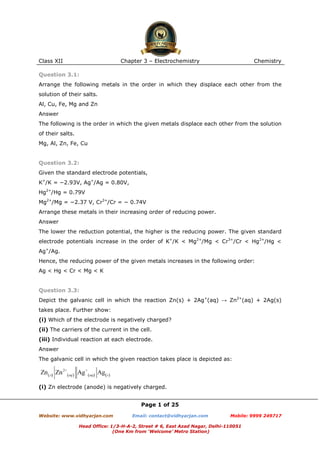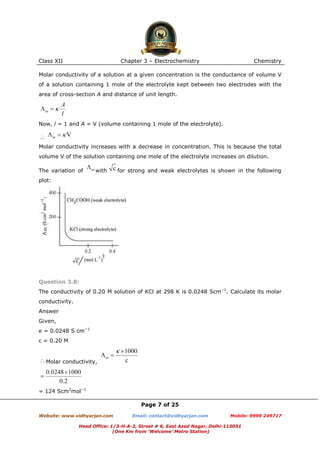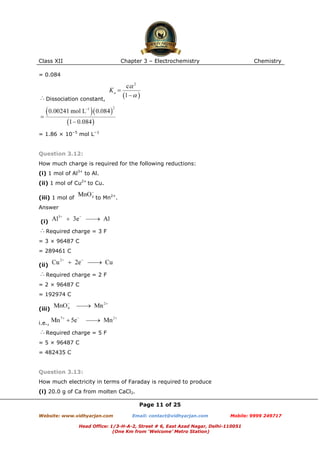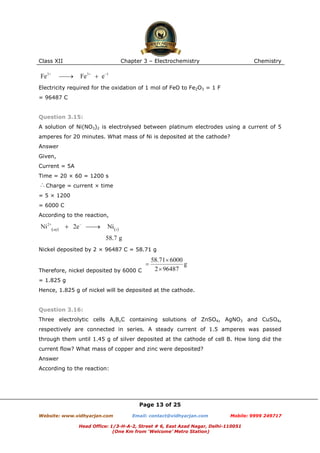1) The document discusses questions from Class 12 Chemistry chapter on Electrochemistry. It provides answers to questions on topics like redox reactions, galvanic cells, electrode potentials, Nernst equation and conductivity.
2) Calculations are shown to determine standard cell potentials, Gibbs free energy, equilibrium constants and amount of electricity required for various redox reactions.
3) Conductivity and molar conductivity are defined and their variation with concentration is explained for strong and weak electrolytes based on number of ions carrying current.


















![Class XII
Chapter 3 – Electrochemistry
Chemistry
∴
Question 3.2:
Can you store copper sulphate solutions in a zinc pot?
Answer
Zinc is more reactive than copper. Therefore, zinc can displace copper from its salt
solution. If copper sulphate solution is stored in a zinc pot, then zinc will displace copper
from the copper sulphate solution.
Hence, copper sulphate solution cannot be stored in a zinc pot.
Question 3.3:
Consult the table of standard electrode potentials and suggest three substances that can
oxidise ferrous ions under suitable conditions.
Answer
Substances that are stronger oxidising agents than ferrous ions can oxidise ferrous ions.
;
This
implies
that
= −0.77 V
the
substances
having
higher
reduction
potentials
than
+0.77 V can oxidise ferrous ions to ferric ions. Three substances that can do so are F2,
Cl2, and O2.
Question 3.4:
Calculate the potential of hydrogen electrode in contact with a solution whose pH is 10.
Answer
For hydrogen electrode,
+
∴[H ] = 10
−10
, it is given that pH = 10
M
Now, using Nernst equation:
=
Page 19 of 25
Website: www.vidhyarjan.com
Email: contact@vidhyarjan.com
Mobile: 9999 249717
Head Office: 1/3-H-A-2, Street # 6, East Azad Nagar, Delhi-110051
(One Km from ‘Welcome’ Metro Station)](https://image.slidesharecdn.com/chapter3electrochemistry-140107051216-phpapp02/85/Chapter-3-Electrochemistry-19-320.jpg)





